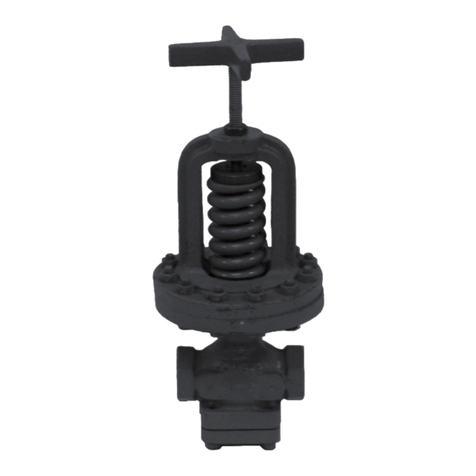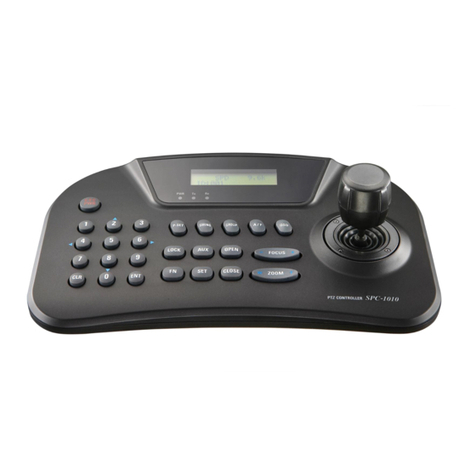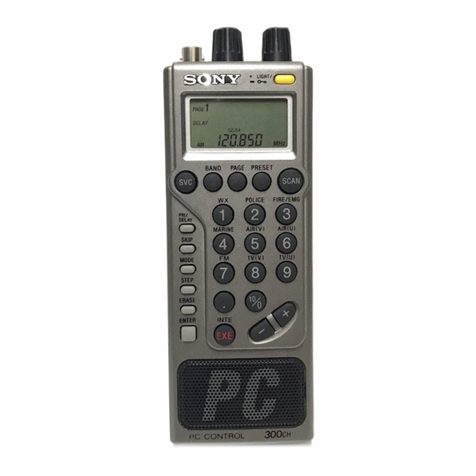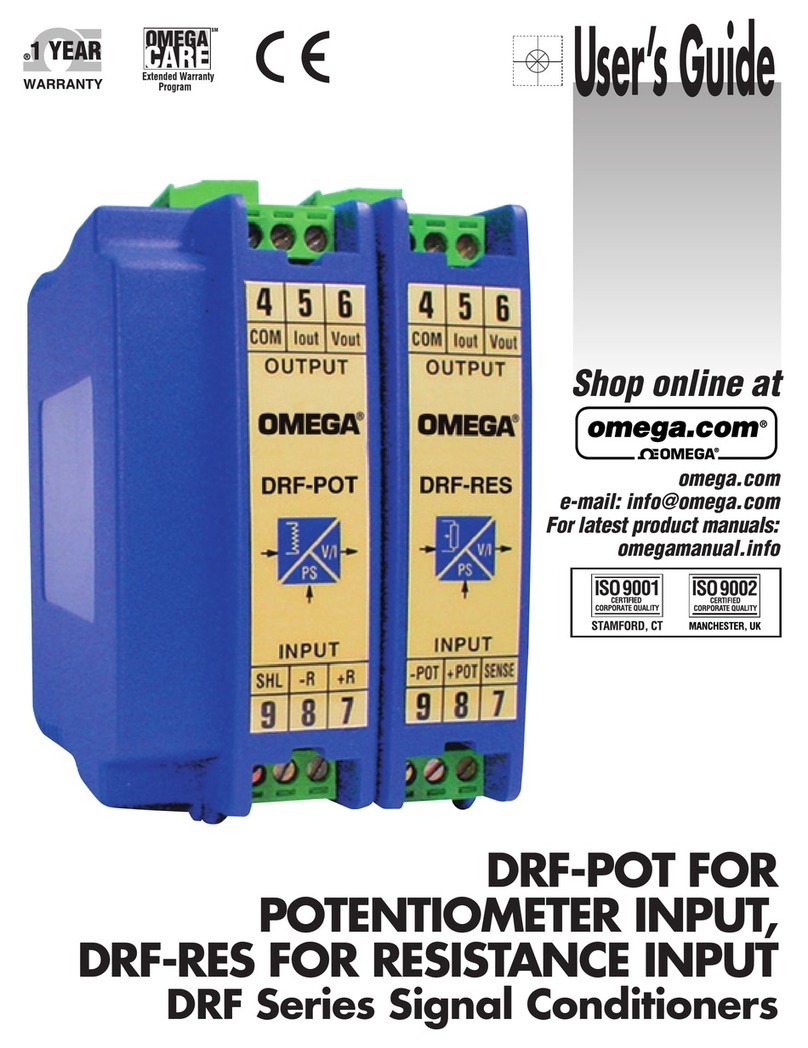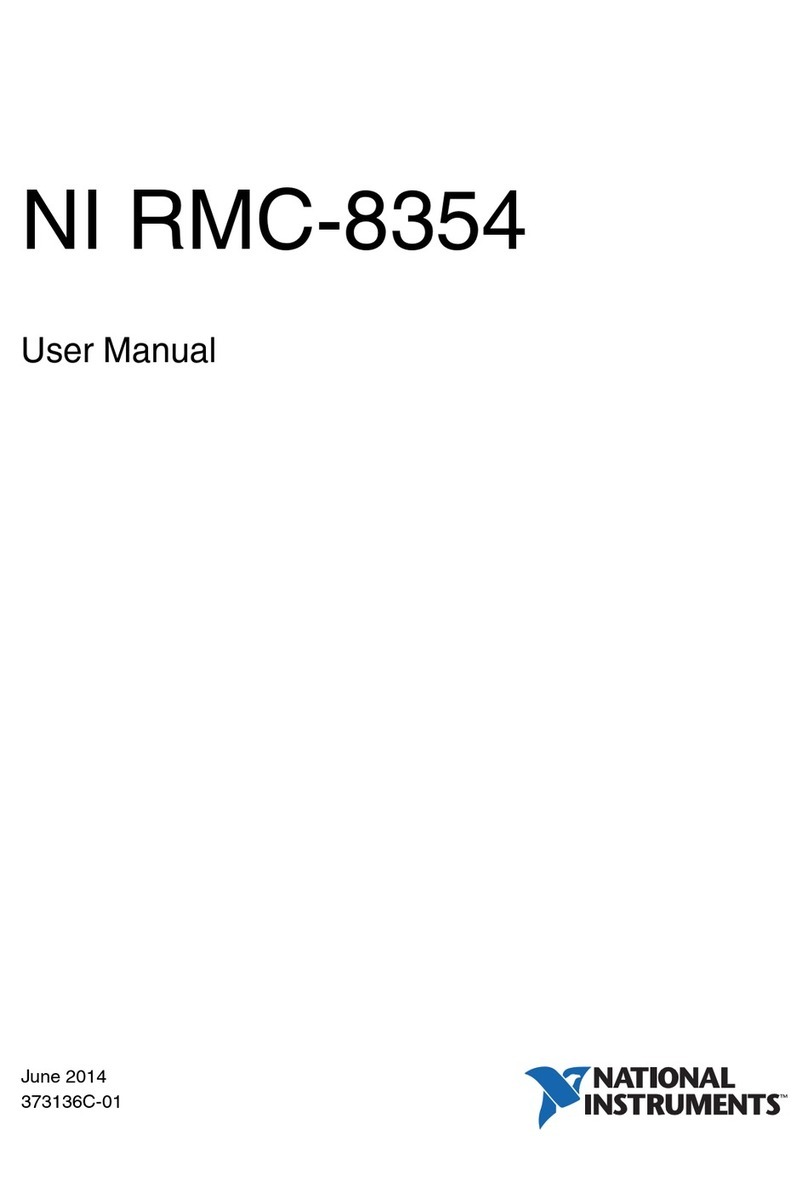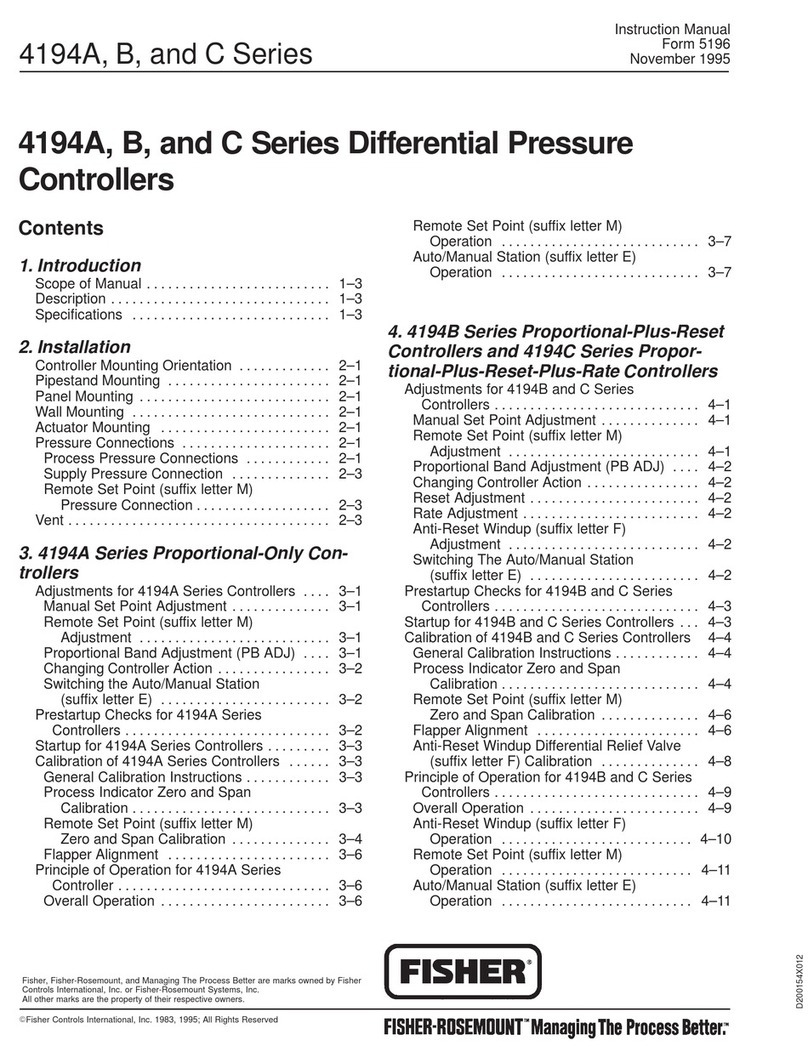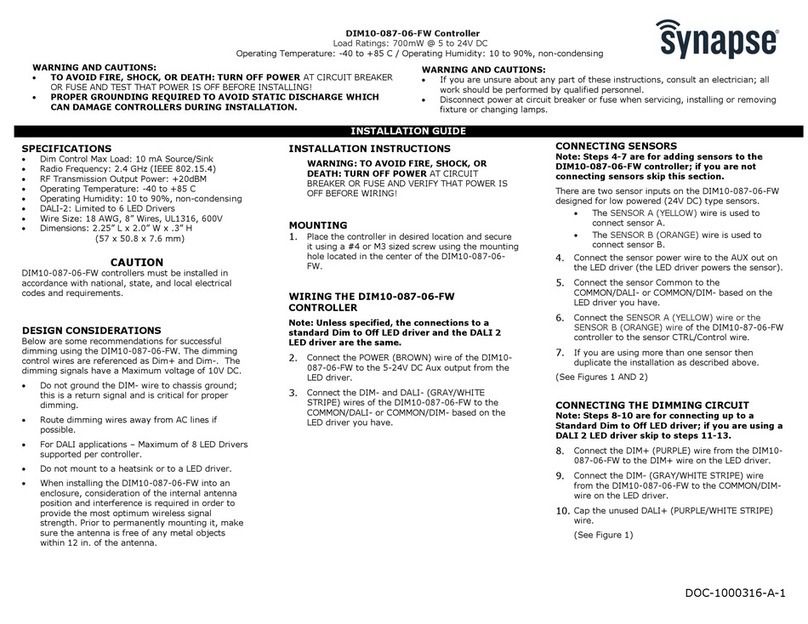SPENCE 2000 Series User manual

2000 Series
www.SpenceValve.com
2000 Series Temperature Regulator
Figure 1. 2000 Series Temperature Regulator
Instruction Manual
VCIMD-17086
May 2022
▲ WARNING
Failure to follow these instructions or
to properly install and maintain this
equipment could result property damage
and personal injury or death.
The 2000 Series Temperature Regulator
must be installed, operated and
maintained in accordance with federal,
state and local codes, rules and
regulations and Emerson instructions.
If the valve vents gas or a leak develops
in the system, service to the unit may be
required. Failure to correct issue could
result in a hazardous condition.
Installation, operation and maintenance
procedures performed by unqualied
personnel may result in improper
adjustment and unsafe operation. Either
condition may result in equipment
damage or personal injury. Only a
qualied person shall install or service
the 2000 Series Temperature Regulator
Introduction
Scope of the Manual
This instruction manual covers operation, installation,
maintenance and troubleshooting for 2000 Series
Temperature Regulator.
Product Description
The 2000 Series is a self-operated temperature
regulator available with single or double seat in direct
or reverse acting. It is also available with two seat
areas for three-way mixing. This regulator provides
economical temperature control of a storage heater
and open topped tank heater.
Principle of Operation
The 2000 Series Temperature Regulator controls
the ow of the media passing through its valve by
responding to temperature changes at the temperature
bulb. The valve is made up of two assemblies: the
valve body and the thermal system assemblies.
The thermal system of the 2000 Series temperature
regulator consists of a temperature probe (bulb),
pressure chamber (bellows) and a length of tubing
(capillary) which connects the two. A liquid is sealed
inside the thermal system. For each temperature
range, a specic liquid is used.

2
2000 Series
Specications
The Specications section gives some general specications for the 2000 Series Temperature Regulator. The
nameplates give detailed information for a specic pilot as built in the factory.
On temperature increase, the vapor pressure of the
liquid in the bulb increases, forcing liquid into the
capillary and bellows and increases the pressure
exerted on the bellows. On temperature decrease,
the vapor pressure of the liquid in the bulb decreases
withdrawing liquid from the bellows which reduces the
pressure exerted on the bellows.
A balance is established between the force exerted
by the bellows and the counteracting range spring
force. On bellows pressure increase, the bellows
volume expands, the compression of the range
spring increases and the stem moves downward.
On bellows pressure decrease, the bellows volume
compresses, the range spring expands and the stem
moves upward.
For a direct acting valve, an increase in bulb
temperature closes the valve (heating). For a reverse
acting valve, an increase in bulb temperature opens
the valve (cooling).
1. The pressure/temperature limits in this Instruction Manual and any applicable standard or code limitation should not be exceeded.
SIZE,
NPS / DN ORIFICE MAXIMUM UPSTREAM PRESSURE, PSIG / BAR
MAXIMUM DIFFERENCE
BETWEEN INLET PRESSURE,
PSIG / BAR
Single Seat, Types 2010 and 2020 Double Seat, Types 2030 and 2040 Three-way, Type 2050
1/2 / 15 C
250 / 17.2 N/A N/A
1/2 / 15 D
1/2 / 15 E
1/2 / 15 A
1/2 / 15 B 200 / 13.8
1/2 / 15 T 140 / 9.7
250 / 17.2
140 / 9.7
3/4 / 20 T 90 / 6.2 90 / 6.2
1 / 254 T 65 / 4.5 65 / 4.5
1-1/4 / 32 T 40 / 2.8 40 / 2.8
1-1/2 / 40 T 30 / 2.1 30 / 2.1
2 / 50 T 20 / 1.4 20 / 1.4
Table 1. 2000 Series Flow and Pressure Ratings
Available Congurations
Type 2010: Single seat, direct-acting
Type 2020: Single seat, reverse-acting
Type 2030: Double seat, direct-acting
Type 2040: Double seat, reverse-acting
Type 2050: Three-way mixing
Body Sizes
See Table 1
End Connection Style
NPT Union
Maximum Inlet Temperature(1)
415°F / 213°C
Maximum Inlet Pressure(1)
250 psig / 17.2 bar
Pressure Ratings(1)
See Table 1
Bulb Ranges(1)
See Table 5
Bulb Materials
Copper Bronze
Stainless steel
Fills
Iso-Butane
Ethylene-Glycol
N-Butane
Reclaimed R-123
N-Propyl-Alcohol
Toluene

3
2000 Series
Figure 2. 2000 Series Temperature Regulator Operation
Type 2050 Three-way Valve (Figure 3)
The Type 2050 three-way valve meets most
mixing or diverting application requirements.
When used for mixing, the forces developed by
the two inlet ows oppose each other and create a
balanced environment. On temperature increase, the
bellow shall force the disk (plug) to close the bottom
inlet of the valve (hot uid), at the same time the other
side inlet of the valve (cold uid) shall be opened until
the temperature is balanced again.
When used for diverting, the forces developed by
the two outlet ows oppose each other and create a
balanced environment. On temperature increase, the
bellow shall force the disk to close the bottom outlet
of the valve and open the side outlet of the valve until
temperature is balanced again.
For diverting service, simply rotate the valve
installation. The diverter inlet is the outlet mixing.
Installation
▲ WARNING
Failure of the thermal system or
foreign material lodged between the
valve’s closure members can lead
to an over-temperature and/or an
over-pressure condition which may
cause injury and/or property damage.
Never install a 2000 Series Temperature
Regulator in a system, which does not
have a properly installed, code approved
temperature and pressure safety
valve or other approved safety device.
These devices must be suitable for the
equipment and processes involved and
in conformance to applicable codes.
△ CAUTION
The piping system must be
adequately designed and supported
to prevent extraordinary loads to the
pressure equipment.
OUTLET MIXING
INLET DIVERTER

4
2000 Series
Figure 3. Type 2050 Three-way Valve
Valve Body (Figure 4)
1. Place the 2000 Series Temperature Regulator in
the direction of the arrow cast on the valve body
so that the heating or cooling media will ow
through it.
2. Place strainer and steam trap ahead of the valve
to protect the valve from the damaging eects of
dirt, scale, foreign material and condensate.
3. Place a manual shut o valve before and after
the valve.
4. Place a bypass line with a manual shut o valve
around the valve for manual operation if the
valve is out of service. Additional recommended
installation diagrams can be found in the Spence
Designer’s Guide.
5. To avoid stresses on the valve or unions, cut the
connecting pipes to the exact length required and
should be in correct alignment.
6. To connect the valve, remove the union ends from
the valve body and attach them to the nipples on
each side of the valve.
7. When tightening the unions to the valve always
use two wrenches.“Never use the valve frame for
leverage.” The valve should be installed in the
vertical position with the thermal assembly on top.
Bulb
The location of the bulb should be chosen carefully so
that the temperature of the media around the bulb or
well will be representative of the entire body of uid
being heated or cooled.
Note
For all applications where the bulb
is mounted in the horizontal position
the red dot on the bulb must be facing
upward. When large volumes of oil are
being heated it may be necessary to
place the bulb near the heating coils to
avoid dangerous hot spots which would
result if the bulb was remote for the
heating coils.
Plain bulbs (standard for 2000 Series), without a union
bushing, are used in open tanks, ovens, drying, rooms,
kilns, etc. Install the bulb vertically, pointing downward
and held securely by suitable straps and clamps. If
the application requires that the bulb be held in a
horizontal position, the free end of the bulb must not
be higher than the xed end, and the red dot on the
bulb must be upward.
INLET(1)
INLET(2)
INLET
OUTLET(3) OUTLET(4)
OUTLET(5)
MIXING DIVERTING
1. Cold uid inlet opens with increase in temperature rise
2. Hot uid inlet closes with increase in temperature rise
3. Mixed uid
4. Opens with increase in temperature rise
5. Closes with increase in temperature rise

SPENCE
R
SPENCE
D
SPENCE
5
2000 Series
Figure 4. 2000 Series Temperature Regulator Installation
Figure 5. 2050 Series Temperature Regulator Installation
Figure 6. Body Marking Identification
R
SPENCE DIVERTER
INLET
MIXING
OUTLET
MIXING DIVERTING
1. Cold uid inlet opens with increase in temperature rise
2. Hot uid inlet closes with increase in temperature rise
3. Mixed uid
4. Opens with increase in temperature rise
5. Closes with increase in temperature rise
INITIAL PRESSURE
SPENCE SERIES 2000
TEMPERATURE REGULATOR
SHUTOFF
VALVE
SPENCE
STRAINER
SHUTOFF
VALVE
SPENCE
STRAINER
SPENCE FTS
STEAM TRAP
CONDENSATE MAIN
SPENCE
STRAINER CHECK VALVE
PRESSURE
RELIEF VALVE
CHECK
VALVE
HOT WATER SERVICE
T & P
RELIEF VALVE
SHUTOFF
VALVE
BULB
STORAGE TANK
TYPE 2050 INDICATING
MIXING REGULATOR
INLET(1)
INLET(2)
OUTLET(3)
GATE VALVE
GATE
VALVE
STRAINER
SUBMERGED BOILER COIL
TYPE 2050 INDICATING
DIVERTING REGULATOR
GATE
VALVE STRAINER
OUTLET(4)
OUTLET(5)
GATE
VALVE
GATE VALVE
COOLANT
CIRCULATING
PUMP
ENGINE COOLER
BULB
STEAM OR HOT WATER

A
6
2000 Series
Union Bushings (Figure 7)
When a union bushing is required for the bulb, the
union bushing is ordered and shipped separate from
the valve. The union bushing consists of three parts:
the bushing, sleeve and jam nut.
1. Attach the bushing tightly to the equipment.
2. Slide the jam nut and sleeve on the bulb and
locate them at a distance. This distance should
be maintained during installation and use. This
distance will allow for the entire eective length of
the bulb to be totally immersed in the media.
3. Insert the bulb into the bushing making sure that
the insertion depth is correct and tighten the jam
nut to secure the bushing to the bulb.
Wells (Figure 7)
When a well is required for the bulb, the well is
ordered and shipped separate from the valve. The well
consists of three parts: the cylinder, sleeve and jam
nut (a separate union bushing is not required).
1. Attach the cylinder tightly to the equipment.
2. Slide the jam nut and sleeve on the bulb and
locate them at a certain distance. The bulb should
be coated with a heat conducting media such
as a mixture of graphite and glycerin or high
temperature grease. This improves the speed of
response of the regulator.
3. Insert the bulb into the well making sure that the
insertion depth is correct.
4. After the bulb is inserted, position it so that the red
dot on the bulb is upward, then tighten the jam nut
to secure the bulb to the well.
Replacement Thermal Systems
The vapor pressure in some systems is too high at
ordinary ambient temperatures to permit removal of
the shipping block without damage to the bellows.
To reduce the vapor pressure within safe limits,
the complete system (bulb, line and bellows) must
be cooled. See Table 3.
1. Allow the system to cool for a period of at least
15 minutes before removing the shipping block.
2. Assemble the bellows to the regulator frame as
quickly as possible after removal from the cooler
so that it will have no chance to warm up. The bulb
should remain in the cold bath while the bellows is
being assembled.
3. After the bellows is assembled to the frame, the
bulb and bellows may warm up without damaging
the bellows.
Startup
1. After the installation, be certain that all shuto
valves are closed and the valve is pre-adjusted
according to Table 4.
2. Crack open the inlet shuto valve.
3. Blow down the strainer upstream of the valve.
Let blow for several minutes, particularly on
new installations.
4. Gradually open the downstream shuto valve.
5. Gradually open the inlet shuto valve carefully
watching the temperature and adjust the valve to
achieve the desired set point.
Table 2. Location of Jam Nut on Bulb
Figure 7. Bulb
BULB DIAMETER A
Small 5/6 11-7/8
Large 1 13-7/8
Extra long 1 17-3/8
JAM NUT
UNION BUSHING
OR WELL
RED DOT

7
2000 Series
For Systems with Ranges starting at Cool System to Suggested Cooling Means
90 to 110°F 32 to 43°C 50°F / 10°C or lower Tap water mixed with ice as needed
65 to 85°F 18 to 29°C 32°F / 0°C or lower Crushed ice mixed with water
45 to 60°F 7 to 16°C 10°F / -12°C or lower Crushed ice mixed with plenty of salt
-15 to 40°F -26 to 4°C -35°F / -37°C or lower Alcohol and “dry ice”
Table 3. Replacement Thermal Systems
REGULATOR
SETTING
RANGE, °F
45 to 115 45 to 145 65 to 140 65 to 170 240 to 310 240 to 340
0
1 45 50 65 70 236 240
2 58 70 80 91 250 267
3 72 87 92 108 265 281
4 81 102 103 125 275 296
5 92 114 114 137 285 308
6 101 124 124 147 295 318
7 108 135 131 158 303 329
8115 143 138 167 310 337
9 122 152 145 177 317 347
10 129 158 157 183 322 353
REGULATOR
SETTING
RANGE, °C
7.2 to 46 7.2 to 63 18 to 60 18 to 77 116 to 154 116 to 171
0
1 7 10 18 21 113 116
2 14 21 27 33 121 131
3 22 31 33 42 129 138
4 27 39 39 52 135 147
5 33 46 46 58 141 153
6 38 51 51 64 146 159
7 42 57 55 70 151 165
8 46 62 59 75 154 169
9 50 67 63 81 158 175
10 54 70 69 84 161 178
- Control points at these settings are slightly below the low end of the regulator range.
Table 4. Approximate Temperature Equivalents for Various Scale Settings
BULB RANGES
MAXIMUM OVER TEMPERATURE
Short Long
°F °C °F °C °F °C
45 to 115 10 to 45 45 to 145 10 to 60
450 230
450 230
65 to 140 20 to 60 65 to 170 20 to 75 450 230
120 to 200 50 to 90 120 to 230 50/ to 110 300 150
240 to 310 115 to 155 240 to 340 115 to 170 350 175
280 to 375 138 to 191 280 to 415 138 to 213 450 230
Table 5. 2000 Series Bulb Ranges

8
2000 Series
PROBLEM VALVE TYPE POSSIBLE CAUSES
Valve does not close Single Seat, Direct Acting • Leakage through valve— note allowable leakage rate
• Sediment trapped under seat— strainer required
• Upstream pressure too high— check catalog for
recommended maximum pressure
• Location of bulb in process—
1. Red dot must be in upward position
2. Change location of bulb (bulb located in “cold spot”)
poor process agitation
• Dead system— leak in temperature system
• Reverse acting used where direct acting is required
Double Seat, Direct Acting See above (except c)
Valve does not open Single Seat, Direct Acting • Incorrect range setting— Adjust range spring screw
• Direct acting used where reverse acting is required
• Location of bulb in process—
1. Red dot must be in upward position
2. Change location of bulb
• Range °C instead of °F
Erratic Action
(Snap action or wide temperature control
band)
Single Seat • Valve installed with flow reversed
Poor Temperature Control All • Location of bulb in process—
1. Red dot must be in upward position
2. Change location of bulb
• Oversized valve—
1. Proper size valve will enhance temperature control
2. Oversize valve give high temperature overshoot
• Valve installed with flow reversed (single seat only)
• Bellows and line hotter than bulb (requires dual fill -
ranges A - D)
Table 6. Troubleshooting
Adjustment
Unless otherwise specied, the regulator is shipped
from the factory with the adjustment nut at its lowest
position and must therefore be raised to the desired
control setting. When the temperature for which the
regulator has been set is reached, it will be maintained
automatically. After the installation is completed, preset
the regulator according to Table 3.
The operating range of the regulator is indicated
on the nameplate. The setting scale is stamped
on the side of the frame and is graduated 0 to 10
representing the limits of the operating range. This
is an arbitrary scale, since it must necessarily vary
for dierent temperature ranges. Table 4 gives the
approximate temperature equivalent for all scale
settings in each temperature range. The values are not
absolute and will vary from one regulator to another
because of manufacturing tolerances.
1. On initial starting, the controlled temperatures may
overshoot slightly, then drop back. Allow sucient
time for the process to stabilize.
2. Check the controlled temperature and make ne
adjustments. The arm extending out from the
adjusting nut indicates the temperature setting.
3. To change the temperature setting, turn the
adjusting nut up if a higher temperature is desired
and down if a lower temperature is desired. The
adjusting pin needed for this purpose is chained to
the end of the indicating arm.
On regulators equipped with a temperature indicator,
change the orientation of the indicator by loosening
the bracket retaining screws and rotate the indicator a
maximum of 180°F in either direction.
Note
All Series 2000 Regulators are provided
with a safety spring which will prevent
the bellows from expanding (even
though the valve has reached the end
of its travel) and draining the bulb
of its ll. This prevents a buildup in
vapor pressure which would damage
the bellows.
There is, however, a limiting temperature applicable
to each thermostat ll used. It is the temperature
above which the chemistry of the ll will decompose.
This limiting temperature is, therefore, the maximum
allowable temperature on 2000 Series Regulators
supplied with bulbs as indicated in Table 5.

9
2000 Series
Parts Ordering
Each regulator is assigned a serial number, which
can be found on the nameplate. Refer to the number
when contacting your local Sales Oce for technical
information or when ordering parts.
When ordering replacement parts, reference the key
number of each needed part as found in the following
parts list. Separate kit containing all recommended
spare parts is available.
Parts List
2000 Series (Figure 8)
Key Description
1 Complete Valve
2 Union Ends
3 Body Assembly
4 Stem Guide
5 Washer, Wave Spring
6 Bonnet
7 “V” Packing Assembly
8 Nuts
9 Frame
10 Mounting Screws
11 Lock Washer
12 Frame Locking Nut
13 Adjusting Nut
14 Indicator Assembly
15 Adjusting Spring
16 Safety Spring Assembly
17 Guide
18 E-Ring
19 Thermal System Assembly
Maintenance
The adjusting nut of each regulator is permanently
lubricated before leaving the factory, and the valve
stem is equipped with a spring loaded Teon packing
gland assembly so that no maintenance should be
required for the life of the regulator.
The valve stem is set and locked at the factory in a
permanent position to give the valve its proper travel.
No adjustment should be made on the valve stem after
the regulator leaves the factory.
The Spence Strainer protects the valve disc and
seat of the regulator from the destructive eects of
scale, etc. The strainer should be blown out at regular
intervals by removing the plug. For quick blowouts, a
hand valve may be installed on the strainer in place of
the plug.

10
2000 Series
REPLACEMENT KIT MATERIAL PART NUMBER
“V” Packing Kit Bronze / Teflon WAL2819
Safety Spring Kit Bronze / Steel WAL2815
Frame Kit Steel WAL2814
Indicator Kit Steel / Stainless steel WAL2811
Adjusting Spring - Gold (Short Range) Steel WAL2812
Adjusting Spring - Silver (Long Range) Steel WAL2813
Thermal System Indicating - 8’ Bronze GQ(1)
Thermal System Indicating - 8’ Stainless steel GT(1)
Thermal System Indicating - 15’ Bronze GR(1)
Thermal System Indicating - 15’ Stainless steel GV(1)
Thermal System Non-Indicating - 8’ Bronze NQ(1)
Thermal System Non-Indicating - 8’ Stainless steel NT(1)
Thermal System Non-Indicating - 15’ Bronze NR(1)
Thermal System Non-Indicating - 15’ Stainless steel NV(1)
1. Refer to Type Number Code on 2000 Series Bulletin to add appropriate letter for temperature range.
Table 7. 2000 Series Replacement Kit Part Numbers
Table8. 2000 Series Replacement Kit Part Numbers
REPLACEMENT KIT MATERIAL
VALVE SIZE
1/2 A 1/2 B 1/2 C 1/2 D 1/2 E 1/2 T 3/4 T 1 T 1 1/4 T 1 1/2 T 2 T
Union End Kit -
Single Seat Cast iron WAL2822 WAL2822 WAL2822 WAL2822 WAL2822 WAL2822 WAL2823 WAL2826 WAL2827 WAL2828 WAL2829
Union End Kit -
Double Seat Cast iron - - - - - - - - - - - - - - - - - - - - WAL2824 WAL2825 WAL2826 WAL2827 WAL2828 WAL2829
Union End Kit - 3-Way Cast iron - - - - - - - - - - - - - - - - - - - - WAL2830 WAL2831 WAL2832 WAL2833 WAL2834 WAL2835
Body Assembly Kit
- 2010 Bronze 2010AC 2010BC 2010CC 2010DC 2010EC 2010TC 2010TD 2010TE 2010TF 2010TG 2010TH
Body Assembly Kit
- 2020 Bronze 2020AC 2020BC 2020CC 2020DC 2020EC 2020TC 2020TD 2020TE 2020TF 2020TG 2020TH
Body Assembly Kit
- 2030 Bronze - - - - - - - - - - - - - - - - - - - - 2030TC 2030TD 2030TE 2030TF 2030TG 2030TH
Body Assembly Kit
- 2040 Bronze - - - - - - - - - - - - - - - - - - - - 2040TC 2040TD 2040TE 2040TE 2040TG 2040TH
Body Assembly Kit
- 2050 Bronze - - - - - - - - - - - - - - - - - - - - 2050TC 2050TD 2050TE 2050TF 2050TG 2050TH
Stem Guide Kit Steel /
Monel WAL2820 WAL2820 WAL2820 WAL2820 WAL2820 WAL2820 WAL2820 WAL2820 WAL2821 WAL2821 WAL2821
Bonnet Assembly Kit -
Single Seat Bronze WAL2818 WAL2818 WAL2818 WAL2818 WAL2818 WAL2818 WAL2818 WAL2816 WAL2817 WAL2817 WAL2817
Bonnet Assembly Kit -
Double Seat Bronze - - - - - - - - - - - - - - - - - - - - WAL2816 WAL2816 WAL2816 WAL2817 WAL2817 WAL2817
Bonnet Assembly Kit
- 3-Way Bronze - - - - - - - - - - - - - - - - - - - - WAL2816 WAL2816 WAL2816 WAL2817 WAL2817 WAL2817

5
4
3
2
1
6
7
8
9
10
11
12
13
14
15
16
17
18
19
11
2000 Series
Figure 8. 2000 Series Temperature Regulator Assembly
THERMAL ASSEMBLY KIT
SAFETY SPING KIT
FRAME KIT
INDICATOR KIT
“V” PACKING KIT
BONNET KIT
STEM GUIDE KIT (2 SETS)
BODY ASSEMBLY KIT

2000 Series
Emerson Automation Solutions
Americas
McKinney, Texas 75070 USA
T +1 800 558 5853
+1 972 548 3574
Europe
Bologna 40013, Italy
T +39 051 419 0611
Asia Pacic
Singapore 128461, Singapore
T +65 6777 8211
Middle East and Africa
Dubai, United Arab Emirates
T +971 4 811 8100
SpenceValve.com
SD1520C
VCIMD-17086 © 2022 Emerson Electric Co. All rights reserved. 05/22
Spence is a mark owned by one of the companies in the Emerson Automation
Solutions business unit of Emerson Electric Co. The Emerson logo is a
trademark and service mark of Emerson Electric Co. All other marks are
property of their prospective owners.
The contents of this publication are presented for informational purposes only,
and while every eort has been made to ensure their accuracy, they are not to
be construed as warranties or guarantees, express or implied, regarding the
products or services described herein or their use or applicability. All sales are
governed by our terms and conditions, which are available upon request. We
reserve the right to modify or improve the designs or specications of such
products at any time without notice.
Emerson Electric Co. does not assume responsibility for the selection, use
or maintenance of any product. Responsibility for proper selection, use
and maintenance of any Emerson Electric Co. product remains solely with
the purchaser.
This manual suits for next models
5
Table of contents
Other SPENCE Controllers manuals
Popular Controllers manuals by other brands
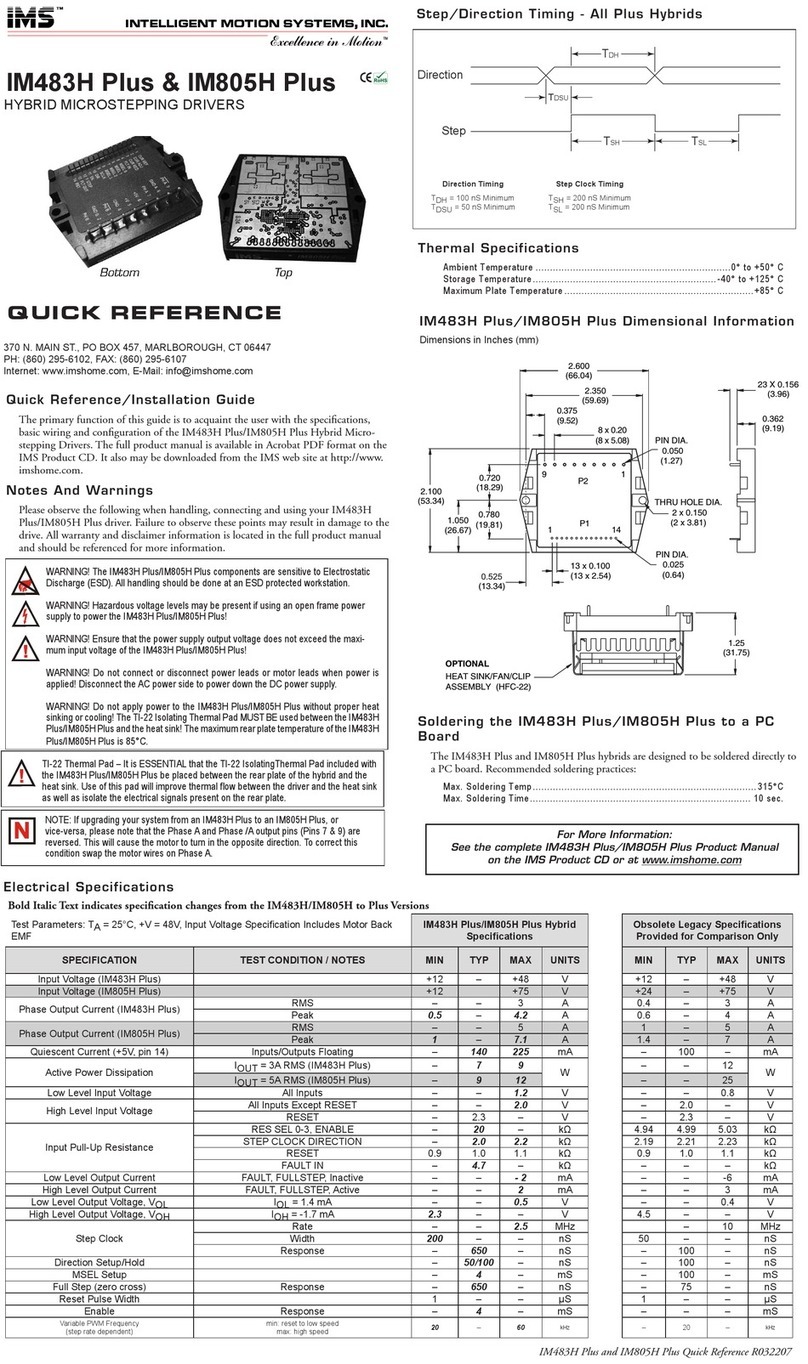
IMS
IMS IM483H Plus quick reference
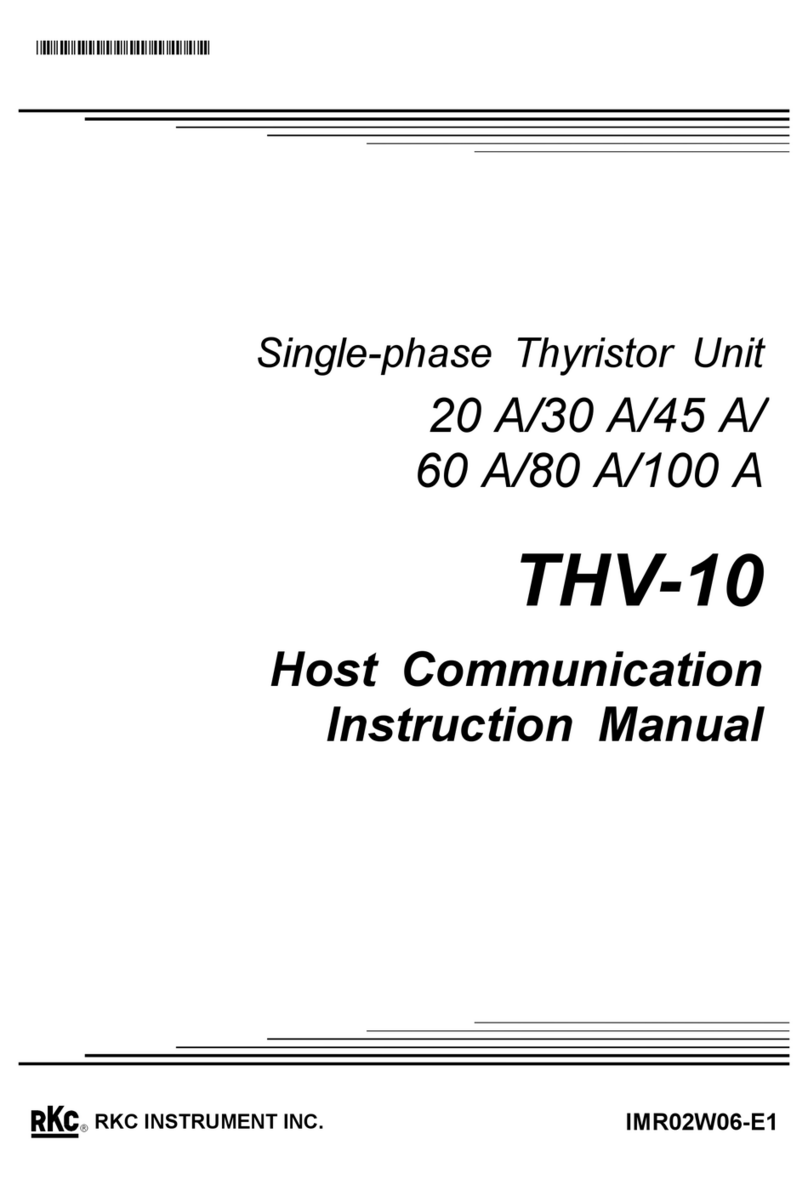
RKC INSTRUMENT
RKC INSTRUMENT THV-10 instruction manual
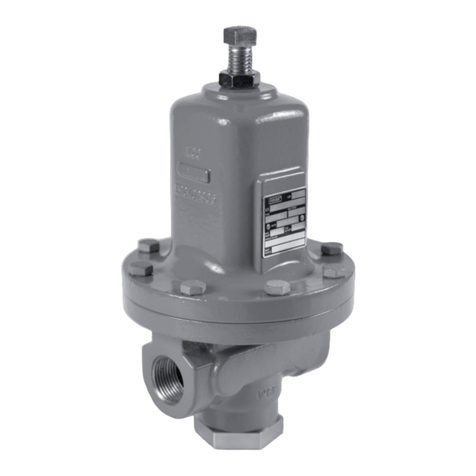
Emerson
Emerson Fisher MR95 Series instruction manual
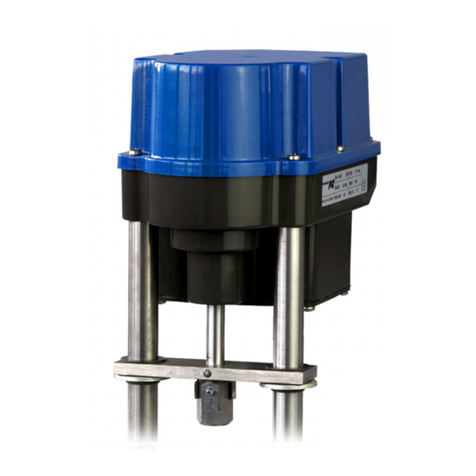
PS Automation
PS Automation PSF301 Short operating instructions
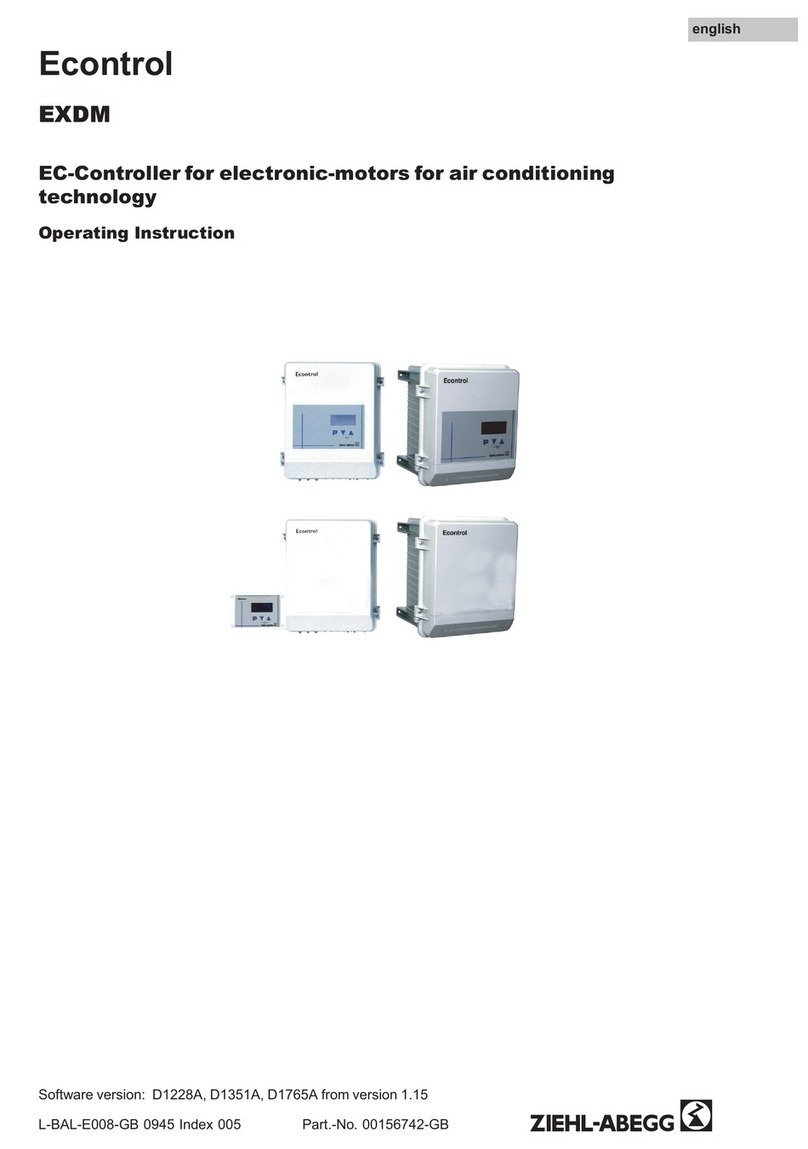
ZIEHL-ABEGG
ZIEHL-ABEGG Econtrol EXDM Operating instruction

Dyna-Flo
Dyna-Flo DFR 026 Operation, Parts, and Instruction Manual
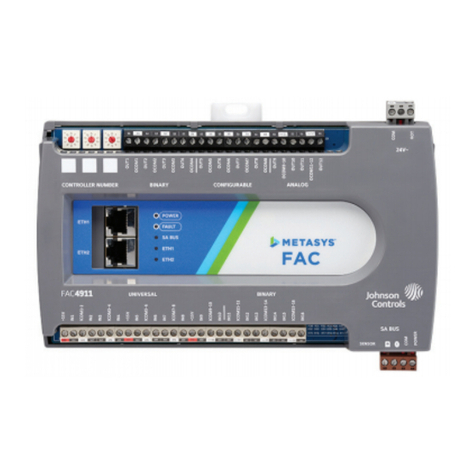
Johnson Controls
Johnson Controls Metasys FAC4911 installation guide
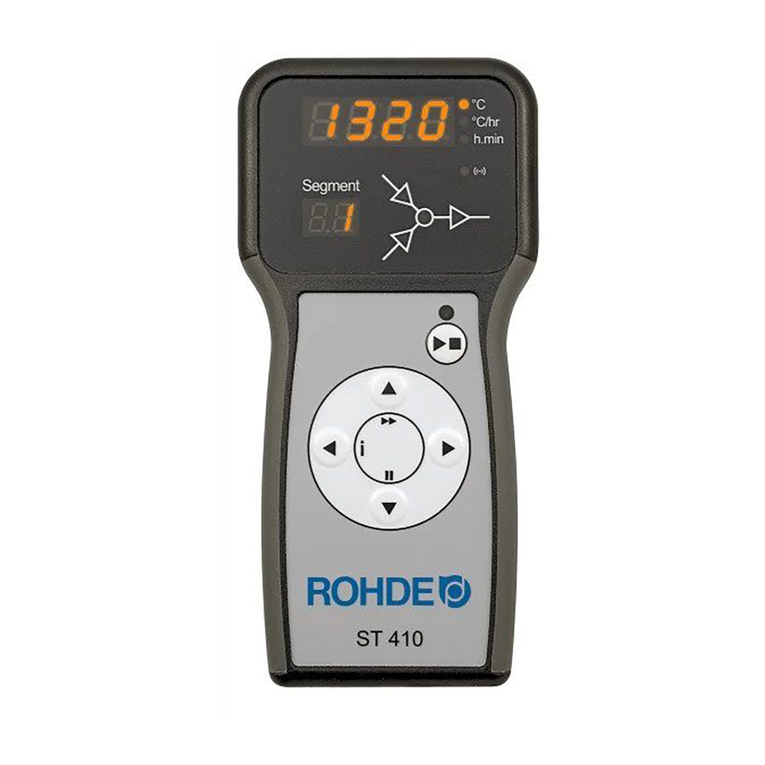
Rohde
Rohde ST 410 operating instructions

SEW-Eurodrive
SEW-Eurodrive MOVIPRO PHC2 Series operating instructions
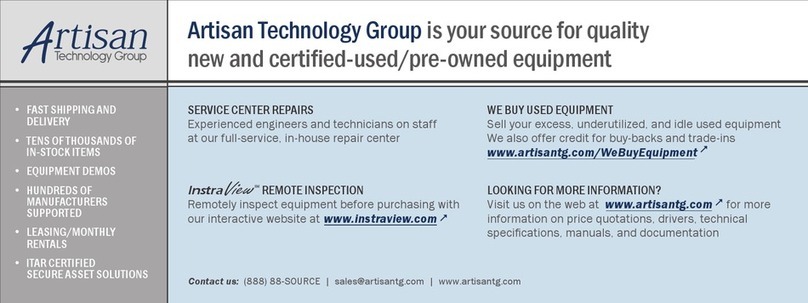
DY 4 Systems
DY 4 Systems PMC-700-X00 user manual
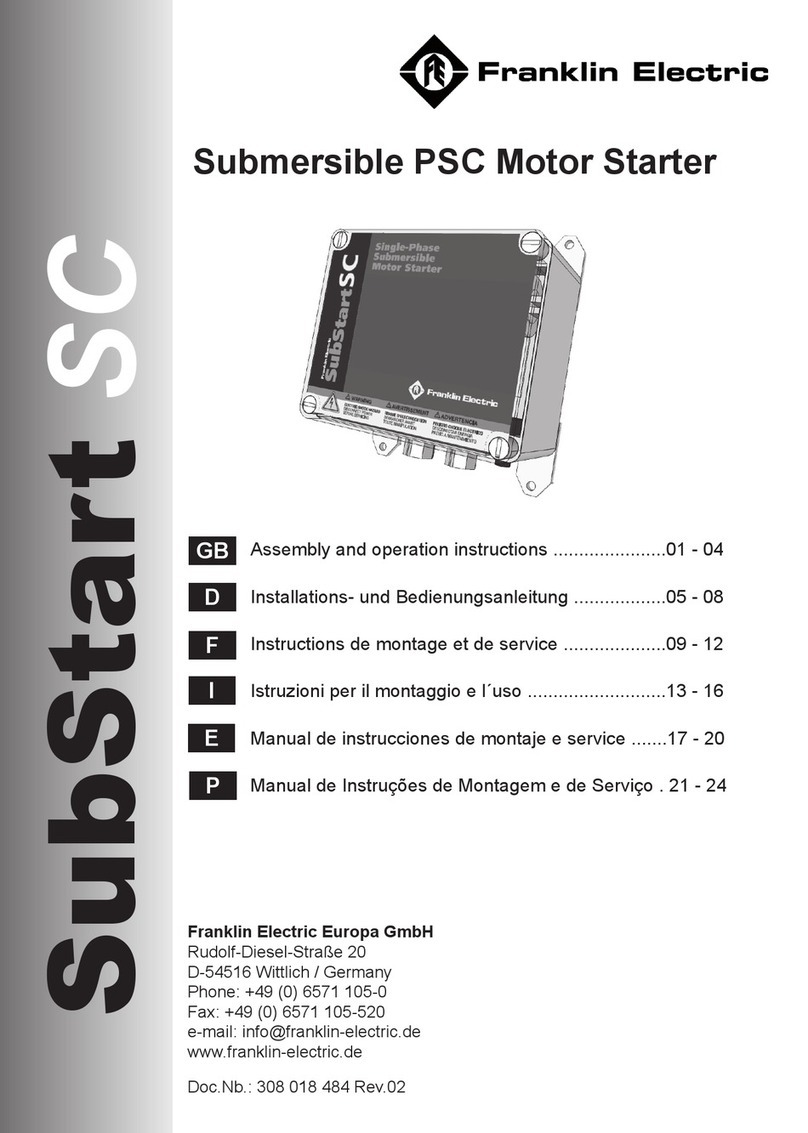
Franklin Electric
Franklin Electric SubStart SC Assembly and operation instructions
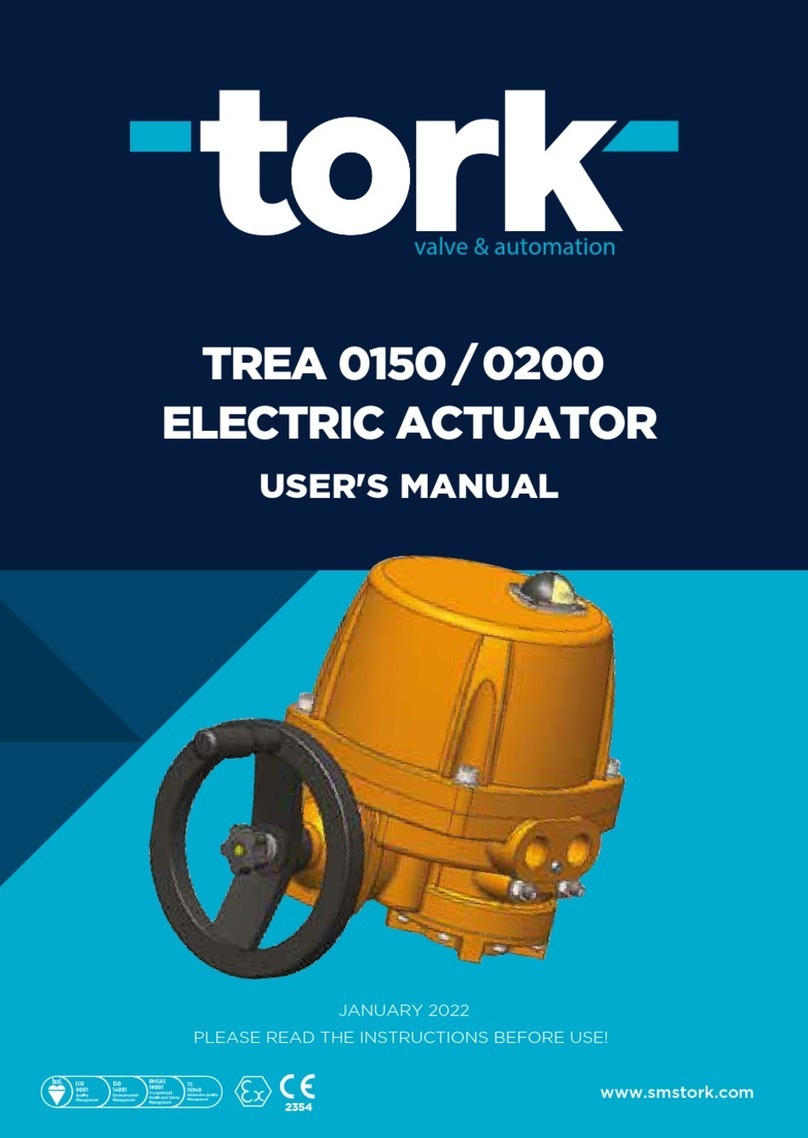
Tork
Tork TREA 0150 user manual
